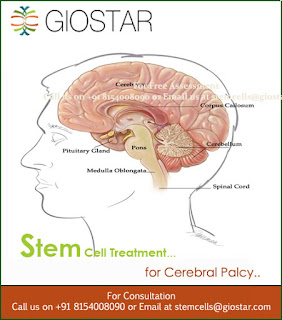Cerebral palsy: an umbrella term for group of degenerative brain disorders, causing various degrees of neuromotor impairment and physical disability. Many factors can be openly link up with the condition such as but limited to infection before birth, premature birth, lack of oxygen as well as severe mental injury during birth. There is at present no treatment available conventionally that is been approved; but can stem cells treatment help and if the answer is yes, is it really necessary to wait for the approval?
Studies are ongoing to minimize the symptoms associated with the condition if not managed altogether. Various supportive treatments have been formulated such as physiotherapy, occupational therapy, etc. to improve locomotion and audiovisual skills of the children. Some oral muscular relaxants are available to tackle muscular stiffness and thereby functional loss. However, it has to be noted that all these treatments are only supplementary without any reversal in the condition. In this regard, various new strategies are being explored by the healthcare market to initiate an alternative solution that can make a big difference.
Stem cells treatment are expected to reverse the damage in the brain to reverse the symptoms. The disease is mainly associated with the neuronal damage, halting the transmission of signal from brain to different muscular organs of the body; leading to their damage. Scientists believe that the ability of stem cells is very impressive to change the scenario. Stem cells are known to be key cells in creating different tissue specific cells; during the human development. These cells with each division give rise to stem cells and tissue specific cells. The produced stem cells are stored by the organ’s future applications. These stored stem cells help the organ to cope up after normal wear and tear of the body. The advanced technology has now enabled to redirect different stem cells from different organs of the body and enrich them at the required site of injury to accelerate the recovery.
Thus, in case of neuronal diseases such as cerebral palsy, wherein the individual is affected with the high degree of brain cells death, stem cells treatment can definitely be useful in regenerating the weak cells or creating new cells to restore back the function to a significant degree.
